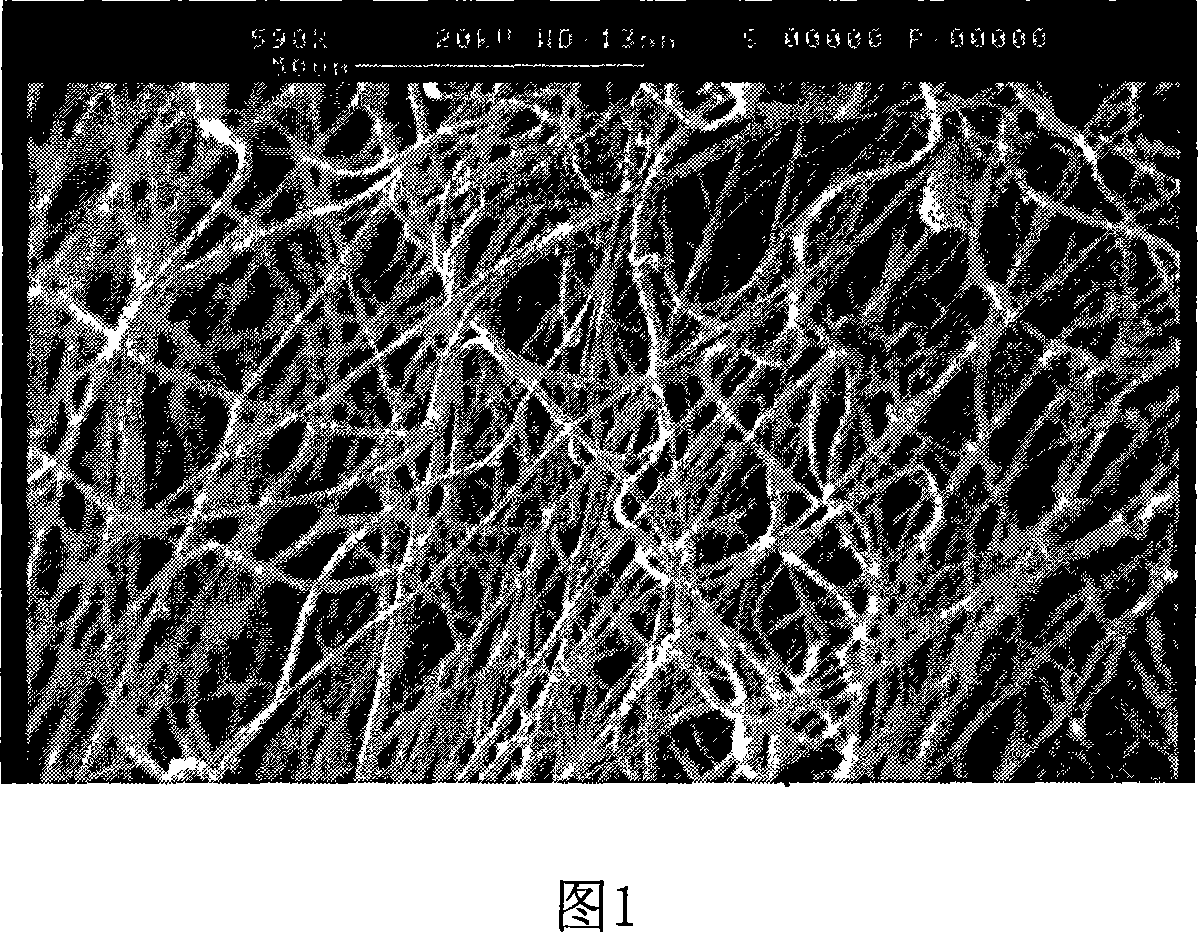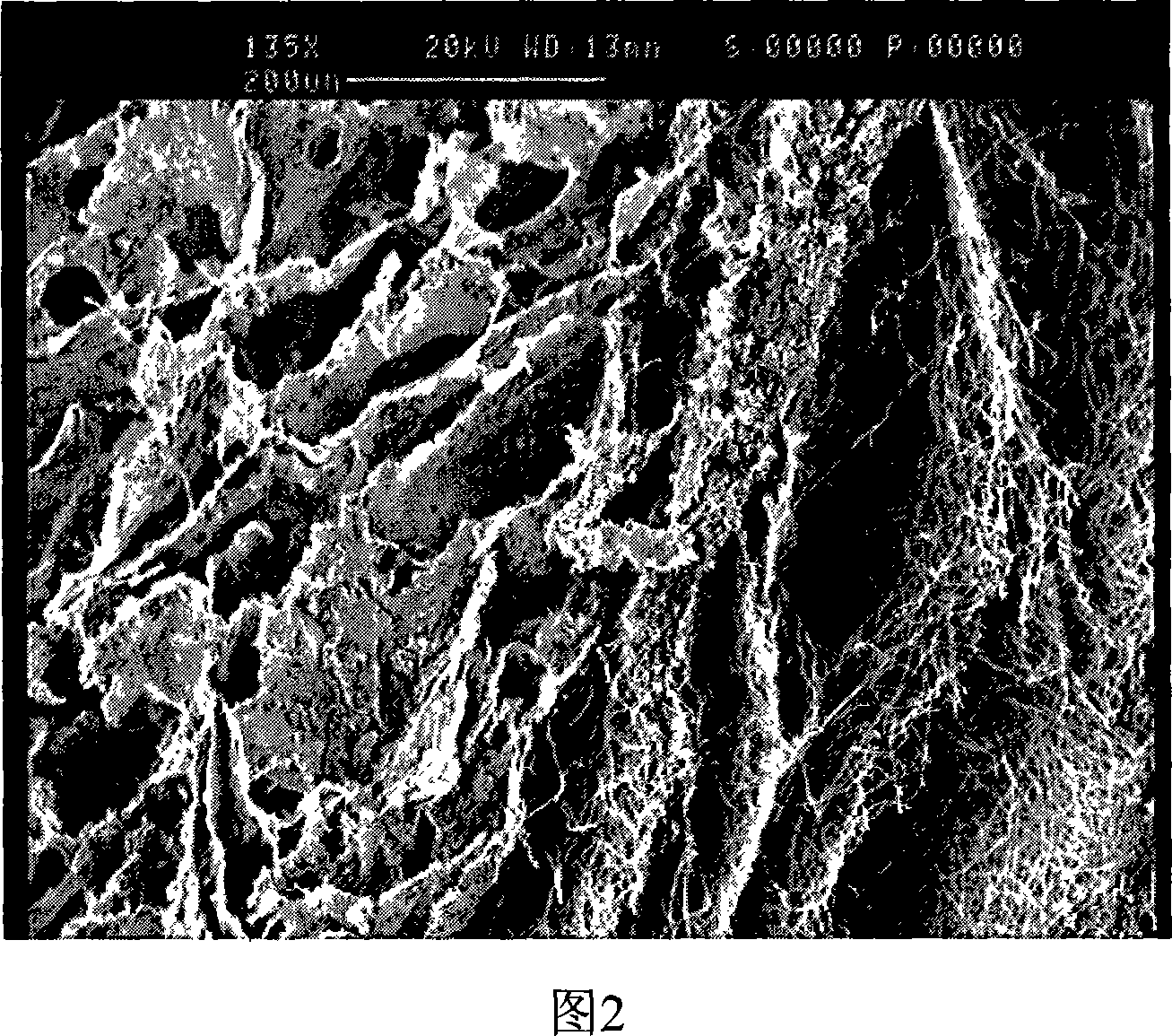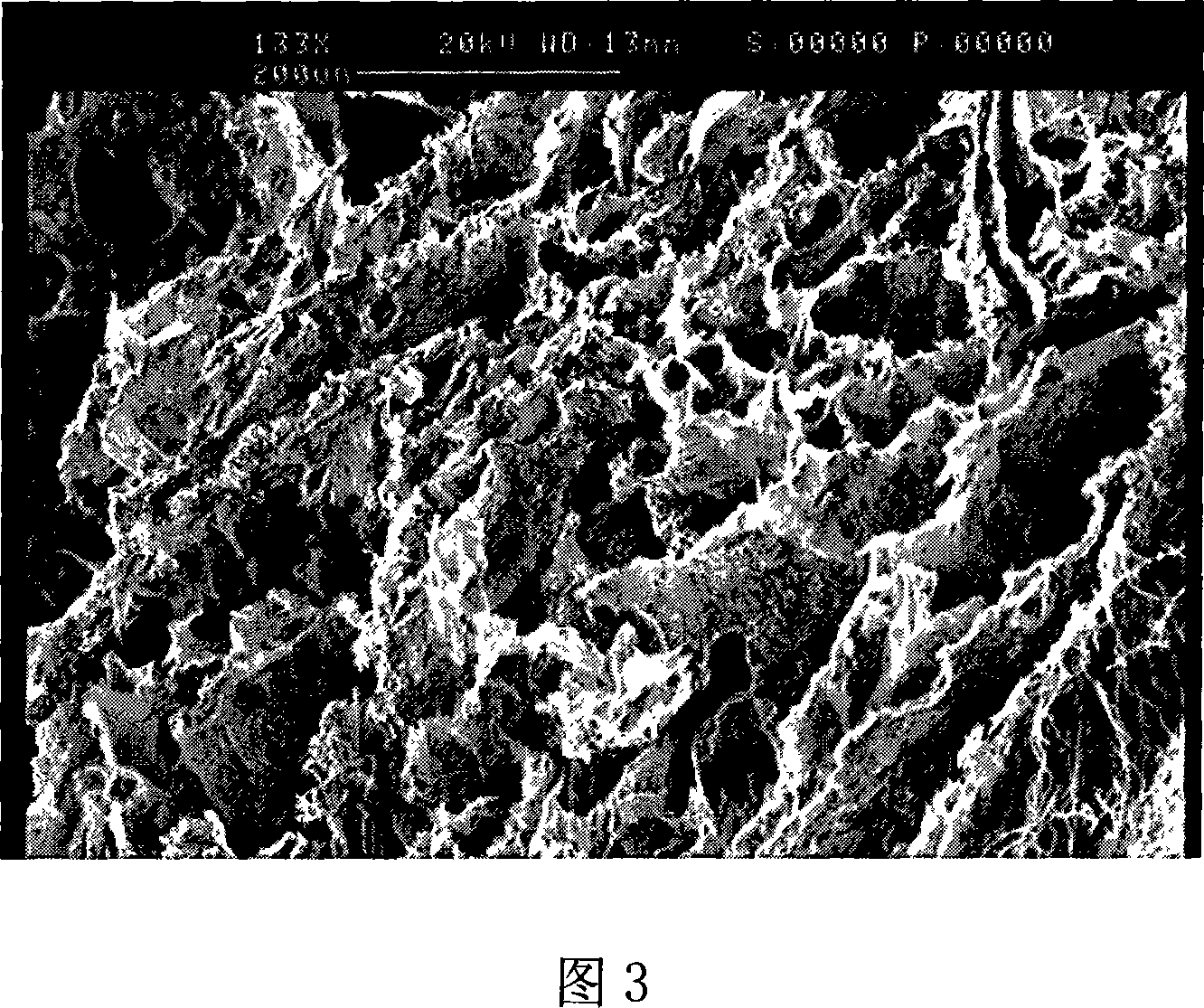Membranous tissue engineering rack and its application
A tissue engineering scaffold, membrane-like technology, applied in the field of membrane tissue engineering scaffolds, can solve the problems of fast degradation time, adverse reactions, poor mechanical properties, etc., achieve good mechanical properties, reduce the amount required, and reduce the production of acidic degradation products Effect
- Summary
- Abstract
- Description
- Claims
- Application Information
AI Technical Summary
Problems solved by technology
Method used
Image
Examples
Embodiment 1
[0026] First prepare a PLLA solution with a low mass concentration (w / v=10%), and the solvent is chloroform / ethanol (v / v=3:1). By electrospinning technology, prepare micron fibers (see Figure 1) (parameters: the range of flow rate=0.5ml / h to 2ml / h, voltage=14KV~18.7KV), and make fiber support with micron fibers. The bone marrow mesenchymal stem was planted on the fibrous scaffold, and the electron microscope observation after 7 days of culture showed that the cells could grow well on the scaffold.
Embodiment 2
[0028] A collagen solution with a concentration of 10 mg / ml was poured onto the fibrous scaffold obtained in Example 1, and frozen at -70° C. for 12 hours. The bilayer material was lyophilized for 24 hours to form a composite material. Finally, vacuum thermal crosslinking is carried out on the composite material: first vacuum pretreatment for 24 hours, during which the temperature is raised by 20°C to 110°C every 6 hours, and then vacuum thermal crosslinking at 110°C for 2 to 4 days. A composite scaffold with good mechanics and sufficient cell attachment surface can be obtained with PLLA as the base membrane and collagen sponge as the guide membrane (see Figures 2-4). (The pore diameter of the obtained PLLA layer is 200-900 nm, and the pore diameter of the collagen layer is 20-500 μm.)
Embodiment 3
[0030] The scaffold obtained in Example 1 was implanted into a white rabbit for repairing tibial defect. After 3 and 6 weeks, it can be found that the tissue grows into the defect site uniformly, forming functional bone tissue.
PUM
| Property | Measurement | Unit |
|---|---|---|
| Aperture | aaaaa | aaaaa |
| Aperture | aaaaa | aaaaa |
| Aperture | aaaaa | aaaaa |
Abstract
Description
Claims
Application Information
 Login to View More
Login to View More - R&D
- Intellectual Property
- Life Sciences
- Materials
- Tech Scout
- Unparalleled Data Quality
- Higher Quality Content
- 60% Fewer Hallucinations
Browse by: Latest US Patents, China's latest patents, Technical Efficacy Thesaurus, Application Domain, Technology Topic, Popular Technical Reports.
© 2025 PatSnap. All rights reserved.Legal|Privacy policy|Modern Slavery Act Transparency Statement|Sitemap|About US| Contact US: help@patsnap.com



